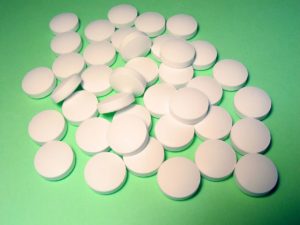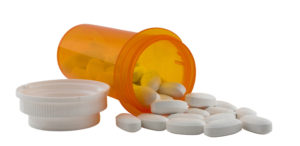 I am starting to read more and more negative comments from physicians and researchers about the big pharma and medical society recommendations for treating currently healthy people with statins in the hope it may prevent a cardiovascular event in the future. Many point out that statin health benefits are overstated while negatives and side-effects have been minimized. Many are pointing out that instead of statins, there should be recommendations for lifestyle changes, such as reducing weight, increasing exercise, not smoking, reducing stress, and cutting back on alcohol consumption. After all, these lifestyle changes ONLY have positive effects, and zero negative side effects. From Medical Xpress:
I am starting to read more and more negative comments from physicians and researchers about the big pharma and medical society recommendations for treating currently healthy people with statins in the hope it may prevent a cardiovascular event in the future. Many point out that statin health benefits are overstated while negatives and side-effects have been minimized. Many are pointing out that instead of statins, there should be recommendations for lifestyle changes, such as reducing weight, increasing exercise, not smoking, reducing stress, and cutting back on alcohol consumption. After all, these lifestyle changes ONLY have positive effects, and zero negative side effects. From Medical Xpress:
Safety and life-saving efficacy of statins have been exaggerated, says USF scientist
Hailed as miracle drugs when they hit the market two decades ago, statins, the cholesterol-lowering drugs prescribed to prevent heart attacks, are not as effective nor as safe as we have been led to believe, say Dr. David M. Diamond, a professor of psychology, molecular pharmacology and physiology at the University of South Florida, and Dr. Uffe Ravnskov, an independent health researcher and an expert in cholesterol and cardiovascular disease.
According to Diamond and Ravnskov, statins produce a dramatic reduction in cholesterol levels, but they have "failed to substantially improve cardiovascular outcomes." They further state that the many studies touting the efficacy of statins have not only neglected to account for the numerous serious adverse side effects of the drugs, but supporters of statins have used what the authors refer to as "statistical deception" to make inflated claims about their effectiveness.
Their paper is an analysis of the data in the statin trials which led them to conclude that "statin advocates have used statistical deception to create the illusion that statins are 'wonder drugs,' when the reality is that their modest benefits are more than offset by their adverse effects."
The paper also describes how the basis of the deception is in how authors of the statin studies present the rate of beneficial and adverse effects. The effect of the drugs on the population is called the 'absolute risk,' which has shown that statins benefit only about 1% of the population. This means that only one out of 100 people treated with a statin will have one less heart attack. Statin researchers, however, don't present the 1% effect to the public. Instead they transform the 1% effect using another statistic, called the "relative risk," which creates the appearance that statins benefit 30-50% of the population. The exaggeration of beneficial effects of statin treatment was illustrated in their analysis of a subset of statin studies, including the Jupiter Trial (Crestor), the Anglo-Scandinavian Cardiac Outcomes Trial Lipid Lowering Arm (ASCOT-LLA), and the British Heart Protection Study.
"In the Jupiter trial, the public and healthcare workers were informed of a 54 percent reduction in heart attacks, when the actual effect in reduction of coronary events was less than 1 percentage point," said Ravnskov and Diamond.... there were heart attacks and deaths in 3% of the placebo (no treatment) group as compared to 1.9% in the Lipitor group. The improvement in outcome with Lipitor treatment was only 1.1 percentage point, but when this study was presented to the public, the advertisements used the inflated (relative risk) statistic, which transformed the 1.1% effect into a 36% reduction in heart attack risk.
The adverse effects suffered by people taking statins are more common than reported in the media and at medical conferences" explains Diamond and Ravnskov. According to the authors, "Increased rates of cancer, cataracts, diabetes, cognitive impairments and musculoskeletal disorders more than offset the modest cardiovascular benefits of statin treatment."
The authors emphasized that low cholesterol levels related to statin use have frequently been associated with an increased risk of cancer. They also noted that most statin trials are terminated within two to five years, a period too short to see most cancers develop. Nevertheless, studies have shown a greater incidence of cancer in people who take statins, and one long-term study demonstrated a dramatic increase in the incidence of breast cancer among women who had used statins for more than 10 years.
They emphasized that the public needs to be wary of conflicts of interest in the medical community and pharmaceutical industry when it comes to touting the benefits of statins and skewing the data in such a way as to make the drugs seem more effective at lowering cardiovascular disease and heart attack risks than they may actually be.
The authors advocate other health beneficial strategies that are known to reduce cardiovascular risk, such as cessation of smoking, weight control, exercise and stress reduction. They also emphasized the great value of a low carbohydrate diet for normalizing all of the biomarkers of cardiovascular risk, with excellent outcomes, especially for people with type 2 diabetes.
 Are statins overprescribed? Currently many people without heart disease and at low risk of heart disease are taking them as a preventive, what is known as "primary prevention". Over the years, changes in medical guidelines have resulted in more and more lower risk older healthy people being prescribed statins. But there has been controversy over this: Are the statins really preventing heart disease and deaths in these low risk people? Also, do the benefits outweigh the harms (because all medications have side-effects, some more serious than others)? Finally, are the extra financial costs worth it?
Are statins overprescribed? Currently many people without heart disease and at low risk of heart disease are taking them as a preventive, what is known as "primary prevention". Over the years, changes in medical guidelines have resulted in more and more lower risk older healthy people being prescribed statins. But there has been controversy over this: Are the statins really preventing heart disease and deaths in these low risk people? Also, do the benefits outweigh the harms (because all medications have side-effects, some more serious than others)? Finally, are the extra financial costs worth it?
 I am starting to read more and more negative comments from physicians and researchers about the big pharma and medical society recommendations for treating currently healthy people with
I am starting to read more and more negative comments from physicians and researchers about the big pharma and medical society recommendations for treating currently healthy people with  According to a new report,
According to a new report,